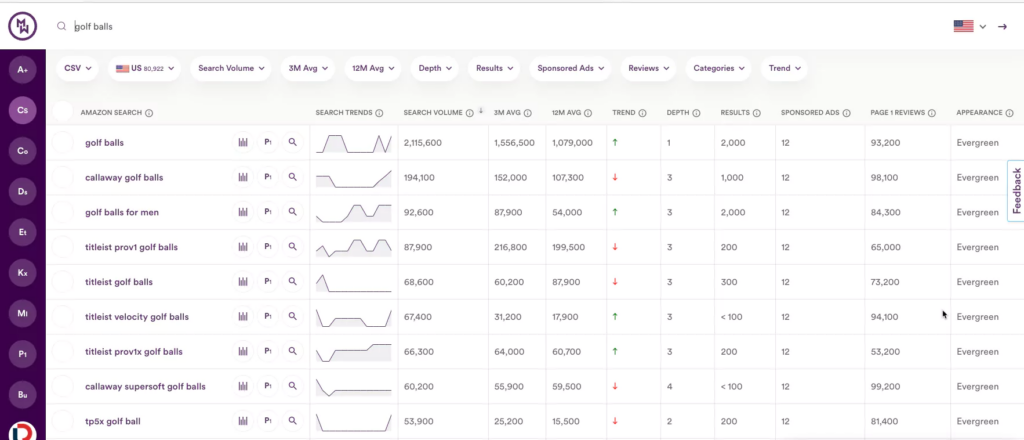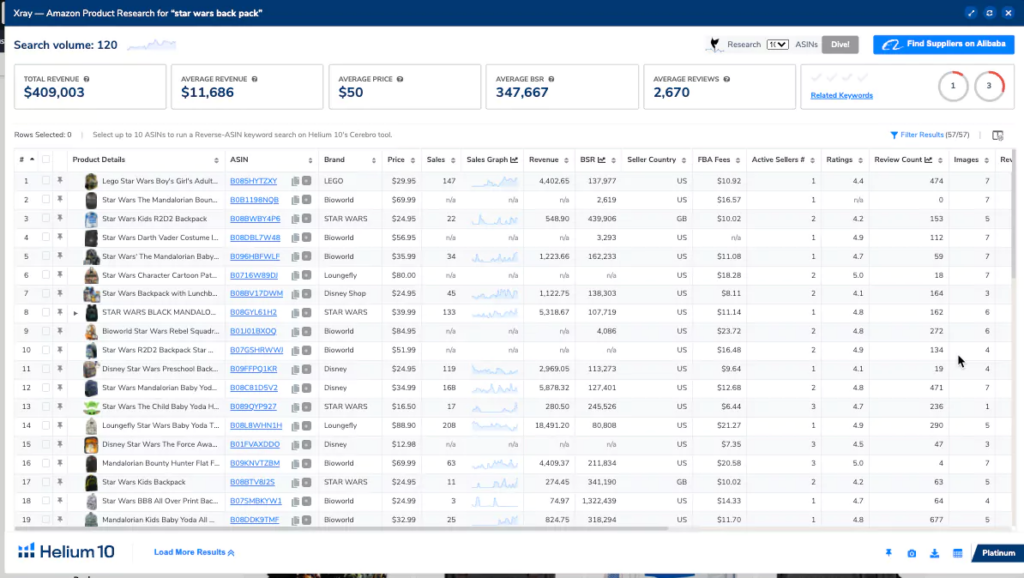The reason why my products aren’t selling on Amazon
selling on Amazon: You’re applying what you’ve learned about Amazon listing optimization that you’ve discovered on Facebook or YouTube. You might even have paid a company to improve your listings. You simply aren’t moving any product, though.
A few years ago, having a compelling title, bullets, and photographs was all that require to make your Amazon listing sell. But as the quantity of organic places has decreased. More locations use for advertising, and the level of competition has risen.
It’s getting harder to make your Amazon listing easier to find.
A strategic plan, comprising an optimized listing and a well-considered marketing approach. Will probably be required.
This article will assist you
This article will assist you in determining what might be preventing your listing from appearing at the top of the Amazon search results if it is not selling.
Customers are almost certainly typing what they want into the search bar when they visit Amazon unless they arrive from an external link to a product.
To find products, they can enter hundreds of possible keyword searches.
There are many tools available to assist with keyword research.
Because the terms you require will differ from those for Google or other search engines. I advise using a service that specializes in Amazon.
Additionally, select a tool that clearly displays the possible search traffic on Amazon.
Our company uses a combination of Merchant Words, Sell zone, and Helium10, which are my favorites and each has its own advantages.

Each keyword phrase will draw a particular kind of visitor.
Make sure you are achieving high rankings for the most popular and relevant keyword terms for your product.
Making ensuring you have conducted the appropriate keyword research is one of the most important components of promoting things on Amazon.
Missing crucial keyword phrases might greatly reduce your overall Amazon sales.
Consider the possible demand for your goods while you conduct your keyword research.
Following your keyword research, you should consider the following queries:
- Is the name of my company or product currently being searched for?
- Are there many people searching for the terms that my clients are most likely to enter into Amazon?
- Exist successful comparable products on Amazon?
For the majority of things to succeed, the answer to at least one of these questions must be yes.
If your brand is already popular. You will have an advantage for a speedy launch because you can easily rank for your name.
To safeguard your branded SERPs. You should first execute some branded advertising campaigns (search engine result pages).
It is crucial to have at least a few highly relevant keywords for your product that have a big search volume if no one is particularly searching for your brand or product.
If not, there may not yet be sufficient demand on Amazon for your products.
As a search volume estimator, you might make use of Merchant Words or Helium 10.
You can tell there is a market for a product if you see that things that are extremely similar to it are selling well on Amazon.
Use one of the aforementioned keyword tools to conduct a reverse ASIN search to make sure you have accurately discovered all of the crucial keywords your rivals are utilizing to win Amazon sales.

Alternatively, if you look around and can’t locate anyone else selling the item. There might not be enough demand.
When you’ve finished your keyword research. Check your listing’s title, bullets, and structured data to make sure your root keywords are there (the individual words that make up your essential keyword phrases).
Ascertain That You Are Indexed
For instance, you want certain terms indexed, such as “black shirt,” “women’s shirt,” and “cotton t-shirt,” if someone is looking for a women’s black cotton t-shirt on Amazon.
If you are not indexed, customers cannot find you using those search terms.
Your revenues are significantly impacted by not being indexed for the proper keywords. Which also influences how people discover your products.
If you find that important keywords are missing, you might need to make changes.
You can also see the keywords those tools identified and are already indexed for your product by using the reverse search feature of Merchant Words (ASIN Plus) or Helium 10 (Cerebro).
Improve Your Product Descriptions And Content
It takes balance to optimize your content and product descriptions.
When writing your copy, you should try to use as many root keywords as you can while still making it engaging to your target audience.
Back in the day, you tried to use as many root keywords as you could.
It was all about expanding the range of search terms for which your goods may appear.
Being picky about the keywords you prioritize in your listing is necessary because there are only so many methods and characters that you can index on Amazon. As a result, you should concentrate on the keywords that have the best possibility of appearing in the top three positions.
Along with offering enough details on the goods and responding to any inquiries buyers may have. You must also make sure that your content and product descriptions set you apart from your rivals.
In order to be indexed where you need to be indexed. You must also make sure that your content contains the appropriate keywords.
It could be time to experiment with your content and product descriptions if you see that your product is still not selling.
See whether your conversion rate increases by revising the text or employing a professional writer.
Improve Your Photographs
While written material is important, a picture really does speak a thousand words.
When you consider that only your title and photos are displayed above the fold on mobile, having well-optimized images for Amazon is essential.
If you have low-quality photographs. You can struggle with your conversion rate and incur more advertising costs.
Simply because the other merchants’ products are more tempting in their photos. Many customers choose to buy from them instead of the other sellers.
Images should draw attention to the product. Its key characteristics, and its immediate advantages.
While your primary image must adhere to certain guidelines, your secondary images might give you the opportunity to share crucial details about your product.
The Amazon Product Detail Page is one of the few places where you may establish some brand continuity.
Look at your competitors’ photos if you’re having problems increasing your conversion rate. What issues do they address that your pictures don’t?
Ascertain That You Are Indexed
For instance, you want certain terms indexed, such as “black shirt,” “women’s shirt,” and “cotton t-shirt,” if someone is looking for a women’s black cotton t-shirt on Amazon.
If you are not indexed, customers cannot find you using those search terms.
Your revenues are significantly impacted by not being indexed for the proper keywords, which also influences how people discover your products.
Use the ASIN (Amazon standard identification number) tools on the Amazon market to see if you are indexed for particular keywords.
Enter your ASIN and browse the list of already indexed keywords.
Improve Your Product Descriptions And Content
It takes balance to optimize your content and product descriptions.
When writing your copy, you should try to use as many root keywords as you can while still making it engaging to your target audience.
Back in the day, you tried to use as many root keywords as you could.
It was all about expanding the range of search terms for which your goods may appear.
Being picky about the keywords you prioritize in your listing is necessary because there are only so many methods and characters that you can index on Amazon. As a result, you should concentrate on the keywords that have the best possibility of appearing in the top three positions.
Along with offering enough details on the goods and responding to any inquiries buyers may have, you must also make sure that your content and product descriptions set you apart from your rivals.
In order to be indexed where you need to be indexed. You must also make sure that your content contains the appropriate keywords.
It could be time to experiment with your content and product descriptions if you see that your product is still not selling.
See whether your conversion rate increases by revising the text or employing a professional writer.
Naturally Collect Reviews
On Amazon, almost every customer spends some time reading at least a few reviews to decide whether the seller is reputable and whether the item is worthwhile.
Generally speaking, in order to be retail-ready. You should aim to have at least 25 reviews.
If you are in a more specialized or narrow market, you could require fewer reviews. You might require more reviews if your category is more competitive.
If you have fewer reviews, concentrate on increasing conversions for your product because you do have to start somewhere.
An estimated 1% to 3% of Amazon shoppers are predicted to submit reviews.
If you don’t already have reviews. There are a few ways to get them.
The Amazon Request a Review button is available. You can utilize Vine (eligibility requirements) (eligibility requirements).
To solicit reviews, you can use resources from outside sources. You should also make sure that your reviews are credible and truthful.
Paying for positive reviews might get you into problems as well as alienate potential customers if they think the reviews are phony. Do not be concerned if you receive one or two unfavorable reviews.
If, however, you begin to receive a lot of bad feedback, figure out why and try to stop it.
When it comes to phony reviews and review sites. Amazon is extremely cautious. This includes refraining from asking loved ones to assess your goods or those of your rivals.
Determine whether your issue is one of conversion or traffic
It’s time to investigate other reasons why our product may not be selling if we haven’t discovered a clear problem.
A report referred to as the Detail Sales and Traffic Report is provided to vendors by Amazon (under Reports, Business Reports).
Unfortunately, many sellers overlook this insightful report. Yet it offers crucial data that will enable you to ascertain whether you might be experiencing traffic or conversion problems.
Pay particular attention to your conversion % and the Unit Sessions Percentage.
The report includes information on the number of page views and sessions that your listing receives during a given time frame.
You may determine whether or not your product is receiving traffic by looking at this report.
You are aware that you need to discover a strategy to increase traffic if it is low.
There are many strategies to increase traffic, such as using paid advertisements or adding more keywords.
If you notice that you are getting visitors but no sales. You need to fix your conversion problem.
Determine How Many Keywords Are on Page One
The joke that the greatest location to hide a dead body is on page two of a search is certainly familiar to anyone who has spent any time in the world of digital marketing.
This is true for any search engine, including Amazon. Reverse ASIN searches were briefly discussed in this article.
For two reasons, I advise you to have a look at how well your top competitors and you are already selling on Amazon.
In the first place, how many more keywords are you ranking for than your rivals?
How to do it:
Set a range of 1 to 10 for the search for organic placements. Compare your product to one of your rivals.
Imagine a much bigger number of pertinent terms indexed by your rivals.
In such a situation, they are outselling your product mostly because they are outranking you on the keywords with the biggest search volume. Run Sponsored Product campaigns for the keyword phrases to help you enhance conversions for those keyword phrases as a defense against this.
With this strategy, you can move up the SERPs for your most crucial search terms.
Make sure your advertising campaigns are effective
In addition to the revenue you gain directly from your advertising, Amazon advertising has a direct impact on organic ranking.
Each conversion, even those brought about by an advertisement. Can improve your organic rating on Amazon. Running Amazon advertising may be necessary if you are selling a product in a crowded and competitive market in order to boost traffic or conversion rates.
You may be able to climb the rankings for significant search phrases thanks to these improved conversions, particularly through sponsored products. The rise in traffic and conversion rates that many brands observe when running ads at a high volume for a brief period of time naturally persists even after dialing back the ads.
Read more:
How To Discover & Understand Your Amazon Product Conversion Rates
Tips For Using Facebook Ads In Your Shopify Store’s Paid Social Campaign

